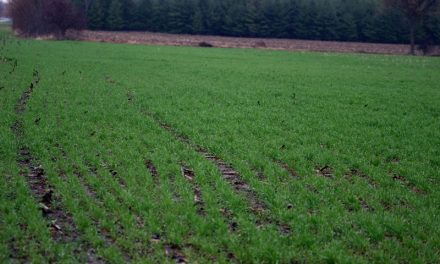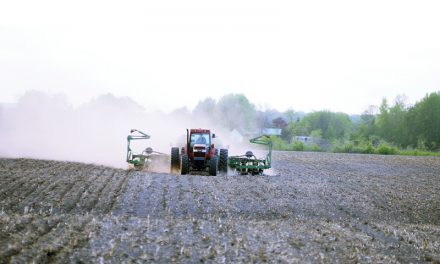By Ashley Knapton – B Sc (Agr), CCA-ON
AgriNews Contributor
Whenever dairy farmers discuss forage quality with their nutritionists, one of the metrics that is bound to come up is fibre digestibility.
Forages with higher fibre digestibility will not guarantee high milk production but they will certainly make life easier for everyone involved. Increased fibre digestibility allows cows to consume more feed which very often translates to more milk. With all that in mind, you might be sitting there thinking that this sounds like something that would help your dairy operation which means the next question is – how can we make sure we have good fibre digestibility?
Brown Mid Rib (BMR) corn has a mutant gene that produces two key results – a brown mid rib that shows up around the 4-leaf stage, and a significantly lower amount of lignin in the plant. BMR was discovered by the University of Minnesota in the early 1900s but became popular in the mid-1990s as nutritionists and dairy farmers realized the benefit of the lower lignin. Early hybrids came with their challenges – lower lignin caused standability issues, understandably since lignin is an important component of the cell wall. These hybrids also were not as agronomically sound as their non-BMR counterparts. The other big hurdle with older BMRs was a large yield drag – in some cases as high as 15 per cent. Even with the higher level of management needed, producers and nutritionists continued to see a benefit with BMR and its use was widespread on dairies throughout North America. Today, the hybrids have improved noticeably. We see stronger agronomics to maintain plant health and a much smaller yield gap – closer to 5-10 per cent. The risks around BMR are much smaller, but the reward of increased digestibility is still there.
Before selecting BMR, have a discussion with your nutritionist and agronomist together at the table to ensure this is the right fit for your operation. Balancing BMR is slightly different than your average corn silage, so it is important to ensure your nutritionist is comfortable with this change. Rations with a higher percentage of corn silage will show the benefit of BMR more because corn silage has a larger influence in the cow’s diet. Not all animals need BMR corn silage, like heifers or far off dry cows, but there are opportunities to manage BMR very specifically. Targeting transition cows with BMR will set them up for higher lactation peaks, even if they transition to a non-BMR ration a month after they freshen. While an increase in digestibility is a benefit, there is such a thing as too digestible of a ration. It will be important to ensure that there are adequate fibre sources for the ration after the switch to BMR has been made. Since the cows will eat more feed when eating BMR, there needs to be extra planning to account for the increased feed needs coupled with the possible yield drag with the BMR genetics.
BMR still requires some careful management in the field, though not all of it is dissimilar to good management practices for all corn silages. It is important to ensure that you plant at a population suitable for the selected BMR hybrid and at an ideal depth to aid in uniform emergence. Select fields for BMR that have good water holding capacities as BMR doesn’t handle drought well. Later in the growing season, discuss with your agronomist the value of a fungicide to maintain plant health. Maintaining plant health will ensure the corn will progress through the conversion of sugars to starch in the cob, allowing the dry down of the plant. When looking at harvest timing, it is best to use both whole plant moisture as well as milk line to find the ideal balance of both. Kernel processing is just as crucial in BMR as it is in non-BMR, as is good storage protocols.
With the high feed prices producers are facing this spring, something that is likely to continue through the summer and possibly beyond, it will be worth evaluating on-farm methods to manage feed costs. BMR corn silage is an excellent opportunity to make high quality forages for dairy herds. These hybrids make corn silage that will be more digestible than their non-BMR counterparts, driving an increase in intakes to help your milk production.












